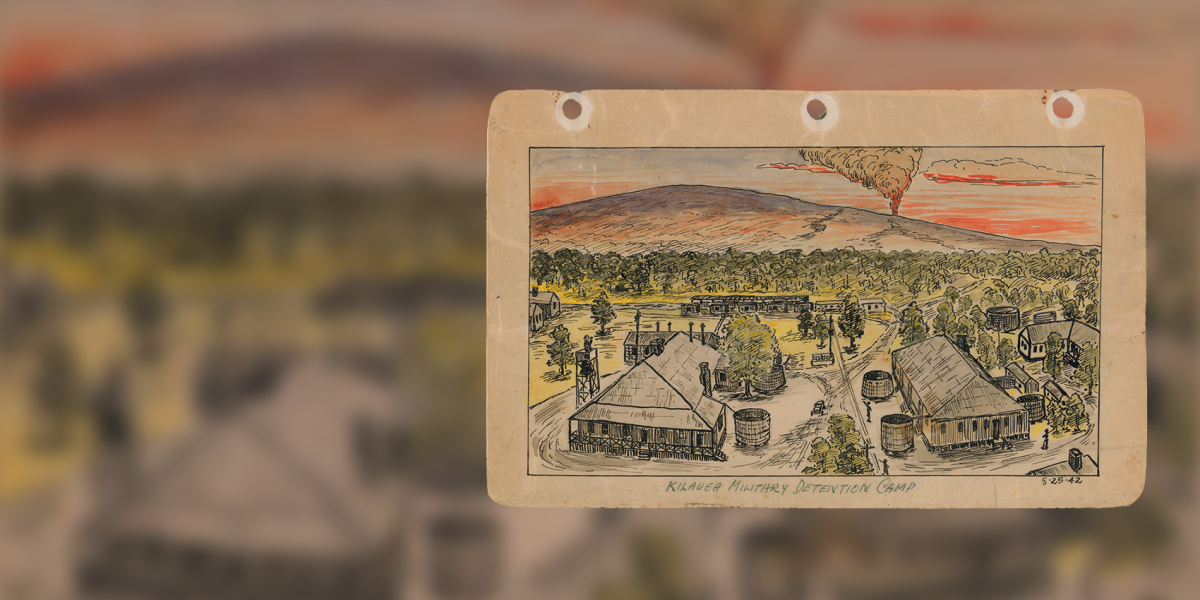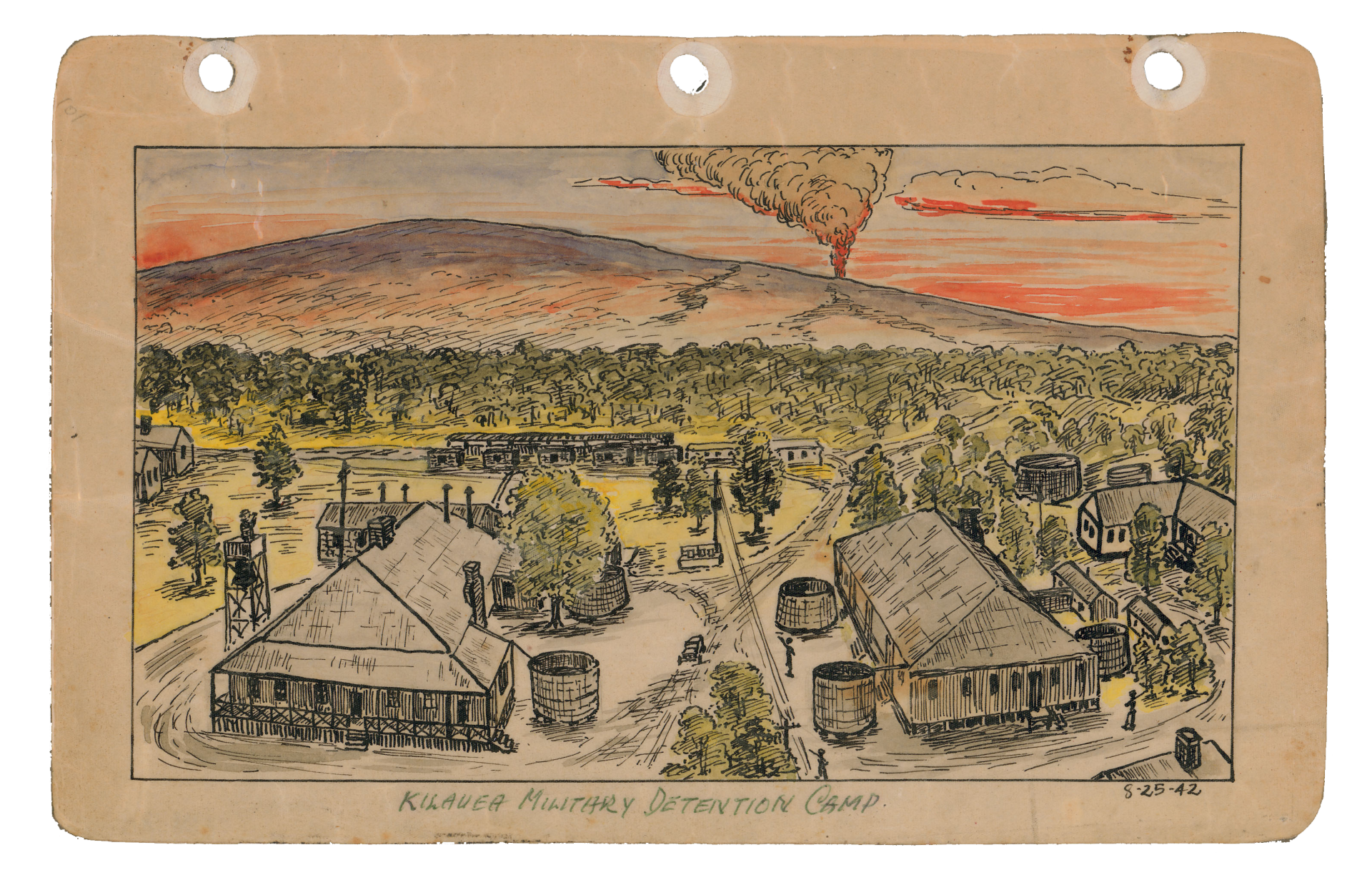
1942
Shortly after the bombing of Pearl Harbor by the Japanese on December 7, 1941 policemen and soldiers began rounding up “suspects” in Hawai‘i and interning them at Kilauea Military Camp, located near Kilauea Volcano on the island of Hawai‘i. The government feared that people of Japanese ancestry would sabotage the war effort, even though investigators found only one case of disloyalty among islanders.
At Kilauea, internees had to walk among soldiers armed with bayonets. While food was plentiful and nutritious, the dignity of the people was taken away. Internees were constantly accompanied by soldiers—even to the latrine.
This was Hoshida’s first camp, from Kilauea he would be transferred to Justice Department camps on the mainland. At Kilauea he painted a watercolor of the camp with the active volcano of Mount Kilauea smoking in the background.



